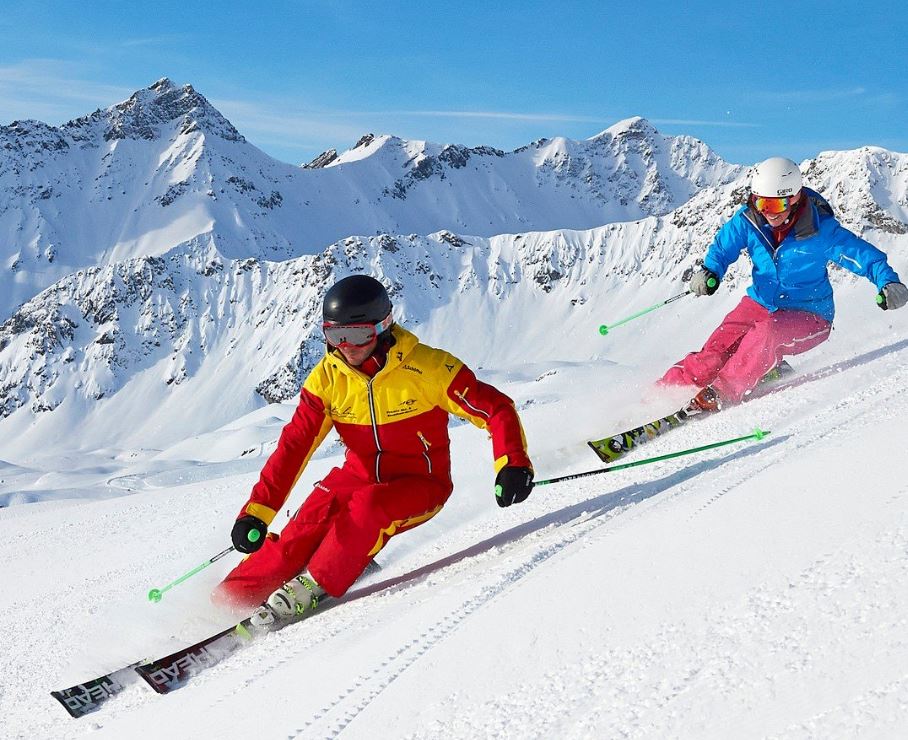![]() Free Shipping
Free Shipping ![]() Buy Now, Pay Later
Buy Now, Pay Later ![]() Eligible
Eligible
Can Red Light Therapy Enhance Performance for Competitive Skiers?

Competitive skiing demands peak physical performance, endurance, and rapid recovery. Athletes constantly seek innovative ways to gain an edge—whether through training, nutrition, or recovery techniques. One emerging technology that has garnered attention in the sports world is red light therapy (RLT), also known as photobiomodulation (PBM).
But can red light therapy truly enhance performance for competitive skiers? Let’s dive into the science, benefits, and real-world applications of RLT for elite winter athletes.
What Is Red Light Therapy?
Red light therapy involves exposing the body to low-wavelength red and near-infrared (NIR) light. Unlike harmful UV rays, these wavelengths penetrate the skin and stimulate cellular energy production (ATP) in the mitochondria. This process is believed to:
- Reduce inflammation
- Accelerate muscle recovery
- Enhance circulation
- Improve joint mobility
- Boost endurance and strength
Given these potential benefits, it’s no surprise that athletes—including skiers—are turning to RLT for a competitive advantage.
How Red Light Therapy Could Benefit Skiers
1. Faster Recovery from Intense Training
Skiing places immense stress on the legs, core, and joints. Downhill racers experience high-impact forces, while cross-country skiers endure prolonged endurance efforts. Red light therapy has been shown to:
- Reduce muscle soreness (DOMS) after intense workouts.
- Speed up repair of microtears in muscle fibers.
- Lower oxidative stress, which can delay recovery.
A 2016 study in the Journal of Athletic Training found that athletes using RLT recovered faster and performed better in subsequent workouts. For skiers, this could mean more productive training sessions and less downtime.
2. Reduced Inflammation and Joint Pain
Cold weather and repetitive motions can lead to joint stiffness and inflammation, particularly in the knees and hips—critical areas for skiers. Research suggests that red and near-infrared light can:
- Decrease pro-inflammatory markers (like TNF-α and IL-6).
- Promote cartilage repair, beneficial for skiers with knee stress.
- Enhance synovial fluid production, improving joint lubrication.
A 2020 study in Lasers in Medical Science found that osteoarthritis patients experienced significant pain reduction after RLT—suggesting potential benefits for skiers dealing with wear-and-tear injuries.
3. Improved Endurance and Oxygen Utilization
Cross-country skiing is one of the most aerobically demanding sports, requiring exceptional cardiovascular efficiency. Red light therapy may help by:
- Boosting nitric oxide production, enhancing blood flow.
- Improving mitochondrial function, leading to better energy utilization.
- Increasing VO2 max over time, as seen in some athletic studies.
A 2013 study in Photonics & Lasers in Medicine found that cyclists using pre-workout red light therapy had enhanced performance and delayed fatigue. If similar effects apply to skiers, RLT could be a game-changer for endurance.
4. Enhanced Injury Healing
Skiers frequently deal with sprains, strains, and ligament injuries. Red light therapy has been shown to:
- Speed up tissue repair by stimulating collagen production.
- Reduce scar tissue formation, improving mobility post-injury.
- Support tendon healing, crucial for ACL and meniscus recovery.
A 2017 meta-analysis in Sports Medicine concluded that RLT significantly improved recovery in musculoskeletal injuries—key for skiers aiming to return to competition faster.
VELLGUS Elite V2
THE #1 RATED RED LIGHT DEVICE
VELLGUS pro V2
THE #1 RATED FULL BODY RED LIGHT DEVICE
How Skiers Are Using Red Light Therapy
Many elite athletes, including Olympic skiers, have incorporated RLT into their routines in several ways:
- Pre-Training: Using RLT before workouts to prime muscles and enhance blood flow.
- Post-Training: Applying it after sessions to speed recovery.
- Injury Rehabilitation: Using targeted light therapy for sprains, muscle tears, or joint pain.
Professional skier Lindsey Vonn has spoken about using infrared saunas (which include similar wavelengths) for recovery, while other athletes use wearable RLT devices for on-the-go benefits.
Potential Limitations and Considerations
While promising, red light therapy isn’t a magic bullet. Skiers should consider:
- Optimal Dosage: Too little exposure may have no effect; too much could be counterproductive.
- Consistency: Benefits accumulate over time—sporadic use may not yield results.
- Device Quality: Not all RLT devices are equal; medical-grade panels tend to be more effective than consumer-grade products.
Final Verdict: Should Skiers Try Red Light Therapy?
Given the strong scientific backing for recovery, inflammation reduction, and performance enhancement, red light therapy is a worthwhile tool for competitive skiers. While it won’t replace proper training and nutrition, it could provide that extra 1-2% edge that makes a difference in races.
For skiers looking to recover faster, reduce pain, and perform at their peak, RLT is a low-risk, high-reward option worth exploring.
Would you try red light therapy for skiing performance? Let us know in the comments!
References:
- Ferraresi, C., et al. (2016). Journal of Athletic Training.
- Hamblin, M. R. (2017). Sports Medicine.
- Leal-Junior, E. C., et al. (2013). Photonics & Lasers in Medicine.
- Tomazoni, S. S., et al. (2020). Lasers in Medical Science.








